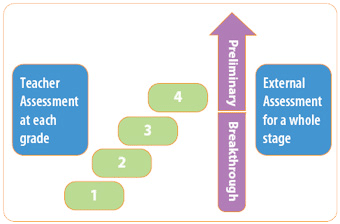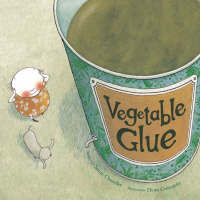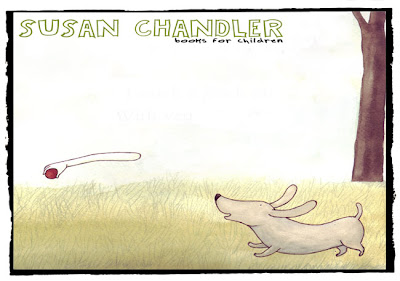¡Vámonos!
After my post earlier in the week about assessment I was interested to attend the session on Asset Languages at the Birmingham Primary Languages Conference. I knew a little of Asset from previous presentations but I was interested to hear if there had been any changes since I had last been updated.
John McNutt began his presentation with the statement –
‘Asset Languages is …a new way of assessing languages against the CAN DO statements of the DSCF’s Languages Ladder. It uses discrete assessment of the four skills of speaking listening reading and writing, allowing assessment to be done in as many or as few skills as wanted. It marks a move away from a content to skills based approach – not what you know but what can you do and work out with what you know; not just learning a language but learning how to learn languages.’
He gave us examples of how the first level descriptors look for Speaking and showed us by teaching us some Chinese that we all could attain this level quite easily.
- I can repeat a short phrase.
- I can ask a few questions.
- I can answer a few questions.
He pointed out that it’s easier to see your progress and your success if it’s in small steps like this.
Asset can be carried out through teacher assessment, external assessment or a mixture of both.
If you do teacher assessment, you can do it on your own at any time – can be done without telling pupils and you can issue your own certificates. John suggested that if the children don’t know they are being assessed, what’s the problem? Fair point I guess. He also highlighted that it is based on what pupils Can Do not Can’t Do.
I liked John’s honesty on the subject of external assessment – If you do external assessment, there is stress! So why do it? He did suggest that it could be done at the end of Yr 6 for transition documents? this caused a sharp intake of breath from a number of people as they thought of SATs and already stressed out 10 and 11 year olds being faced with more exams.
The assessments are available in a range of many languages – and it is possible that a generic English pack will be produced so that any language can be assessed – good idea! The teacher assessments can be adapted as long as they fit the can do statements although external assessments are obviously set externally.
John wanted to demonstrate that assessment can be fun and asked for a volunteer. Having been met with silence, I took pity on him and volunteered, little knowing that i had to prepare the ‘class’ for an Asset Languaeg assessment in 5 minutes! I had to teach the ‘class’ a song in another language – guess what I chose? La Vaca Lola! Soon the whole class were waving their tails and mooing in Spanish – great fun!
Advantages of using Asset:
- A way of providing baseline data (in the future!)
- No need for QTS status.
- Kudos of having a certificate to recognise their achievements in languages.
So what do you have to do and how much does it cost?
Primary Starter pack – Breakthrough £75 +VAT (covers all languages)
Certificate packs – 1st pack of 125 is free, after that, costs can be as low as 26.7p +VAT
For external assessments – £1 per skill per pupil.
I asked the question – Do you have to be accredited teacher?
If you want to issue certificates, you complete the self access DVD and it covers you for all languages. As a training exercise rather than pass/fail – and you can be an accredited teacher for any number of schools. This is a change from the previous system where you had to complete the course for each language and each level that you wished to test!
Registration is free – you pay as you go!
Centre coordinator training is free and organised regionally – one day to become an administrative expert on Asset – not compulsory but recommended.
Asset seems to have adapted to become much less of an administrative burden than it used to be. I like the idea of not having to externally assess to use the system, and also the ability to reward certificates as and when you see fit (obviously assuming pupils have met the standards!) Perhaps it’s something I should investigate further – although I’m still a little reluctant!

Sophie Bregent-Kight, Primary MFL AST at Moseley Language College led the second workshop on Tuesday entitled Adapting and using stories in PLL. Sophie is no stranger to many of those attending as has worked with a number of schools and also speaks at the ELLRSG almost as much as me!
She began by taking us through some reasons for using stories in PLL, linking it to the KS2 Framework for ALL year groups. There seems to be a concern that stories area great fro Year 3 but not for Year 5 and definitely not for Year 6. I agree with Sophie’s point that stories aren’t just for little kids – they can be used for all ages; it is what you do with them that matters.
Sophie recommended a number of places online where you might find some stories and activities, either in Powerpoint form or to purchase- there are many more including the various Grids for Learning, especially Northumberland which has whole units preplanned around fairytales such as Goldilocks, Red Riding Hood and the Three Billy Goats Gruff.
There’s also Herefordshire and Stoke .
www.storyplace.org – PPT stories – little stories
www.momes.net – French website
www.activedesigns.co.uk/french-educational-products.htm
www.ablekids.co.uk/merchantmanager
Sophie then went on to show us an example of how a story can be adapted and used for a whole unit of work. Goma de verduras is a story that Sophie has adapted from Vegetable Glue by Susan Chandler illustrated by Elena Odriozola about a child whose body is falling apart because they don’t eat enough vegetables to make vegetable glue.
Sophie translated the story into Spanish – here’s the first page:
Sabía lo que hacer
Lo pegué de nuevo con
Goma de verdura
We then discussed ways to use the story – obvious themes to pursue are food and body parts. Sophie talked about some of the activities that she had used in exploiting the story:
- ¿Adónde va la mariquita? betting game – guess where the ladybird is going.
- Made books as visual dictionaries using glossaries and research
- Labeling Shrek / monsters – gave a choice of people to label according to interests
- Making storyboards of the story
- Human sentence to reorder text
- Had models of little girl and practiced parts of body falling off with narration in Spanish
- Teacher revisited during the week
- Did similar activities with food stuffs
- Took it on to like and dislike
- Grammar plurals
- Survey and graph
- Report back reuses previously used vocabulary
- Healthy / unhealthy = sano / malsano
- Menu for a party – to keep in mind that it’s supposed to be healthy
- Another idea – what do you put in your basket?
- Recipe for vegetable glue – quantities included here
- Girl with a stomach – feed food stuffs into the girl for their recipe
- Moved on to talk about food groups ands healthy eating pyramid in English and Spanish – compared and contrasted – portion sizes
- Used to discuss their eating plans for next day
Sophie then shared a
nother idea she had to use ICT to research food in Spanish supermakets by accessing their pages on the web. You need to have a Spanish postcode – use the white pages to choose a name you fancy and ‘borrow’ their postcode if necessary– or borrow one from a Spanish friend!
www.carrefour.es
www.eroski.es
www.alcampodirect.es
www.mercadona.es
Some suggested activities –
- Compare prices
- Compare food stuffs – do we eat the same or different? Different vegetables? What is traditional? Packaging?
- Make own adverts for food – cut and paste
I really enjoyed Sophie’s ideas – I’ve never read Vegetable Glue, but it sounds like just the kind of book that is really versatile and useful for PLL. Makes a change from Hungry Caterpillars and Giant Turnips!!
Any further suggestions anyone?
Hillcrest School in Bartley Green, Birmingham, has recently developed a language facility called Lingua, similar to the Europa Centre in Havering (See NACELL report). It caters for groups from KS2 – KS5, offering tailor made half or full day programmes in French, Spanish, German and EAL.
Avril Cooper and her colleagues from Hillcrest showcased the possibilities at yesterday’s Birmingham Primary Languages Conference, showing us a presentation about the facility before allowing us a taster of the types of activities that pupils might experience on a trip.
On offer at Lingua@Hillcrest:
- Shopping experience
- Puppet shows
- Video editing days
- Tailor made visit
On entering the Shopping Experience, pupils pass through Passport control, then change money into Euros at the bank to be spent in the cafe or souvenir shop. All the shop front, signage etc are in the foreign language. Pupils will then take part in a carousel of activities learning the vocabulary of
- Clothes
- Shops names and items
- Numbers and prices
- Food and drink
Once there has been much hilarity as children rush to dress in the correct clothing, or play pass the food, or make number with their bodies, they go shopping with a personalised shopping list, gaining a stamp for each item. Once pupils have successfully purchased their six chosen items, they then shop for other items, competing to buy most (The record is 32!)
Then pupils can buy a drink or souvenir with their euros before going home!
New innovations soon to be added include the use of PDAs with the language recorded on it visually and aurally as a reminder, longer opening hours and the development of new games and activities.
Several schools in the area have already visited and thoroughly recommend the experience. One quotation from a child – ‘We had the best time of our lives at the language village’. The current cost is £125 for ½ day or £250 for whole day, with optional lunch available at £1.80 per child.
I’m planning on taking a group from WCPS; problem is – which year group do I take??
If you’d like more information, contact lingua@hillcrest,bham.sch.uk or call 0121 464 3172
Birmingham Primary Languages Conference – #2 Primary Languages – The National Picture
Joe Brown, was the keynote speaker at the Birmingham Primary Languages Conference. Joe is a Primary Language Teaching Adviser at CILT explained his experience and background as a Primary School teacher, teaching abroad (in bilingual German school) and in Inner city London. Joe used an exercise with the following greetings to highlight how many languages were spoken by the pupils at the school where he teaches. He talked about the opportunity that this offered to show respect to others by learning how to greet these children in their own language, giving value to the home language and also the possible discussion of forms of greeting (tu et vous; tu y usted) How many languages can you identify?
|
Salut |
Salaam |
Merhabah |
Bom dia |
|
Guten Tag |
Servus |
Pree-vyet |
Adaab |
|
Hola |
Zdravo |
Ahoy |
Jambo |
|
Vanakkam |
Namaste |
Bonjour |
Czesc |
Joe was definite that PLL is NOT just about speaking and listening – there are five strands in the KS2 Framework and all are as important. There is fun in PLL but there is also rigour.
He highlighted the QCA scheme of work, pointing out that it is specifically designed for the KS2 Framework and is freely downloadable or can be purchased for £15.
Joe asserted that every child is interested in language learning – every one can be intrigued by the idea of different languages, giving successful experiences to those who may have struggled in other areas of the curriculum. We want to harness this enthusiasm, embedding language into the curriculum and making sure that language lessons stay as among pupils’ favourite lessons. Joe commented that, in his experience, this enthusiasm is particularly well maintained where there is dialogue between primary and secondary, and where PLL has the support of the Headteacher.
Joe reported on the spread of languages chosen for PLL – 91% doing French, 25% Spanish and 12% doing German. He also pointed to HLTAs playing a big role in some areas.
When pupils re asked about PLL, three words are heard a lot – Joe offered some ideas as to why:
DIFFERENT – incorporating learning styles
EXCITING – working with and extending the children’s interests
FUN – children and teachers see learning experience as motivating
Joe used the following song to discuss how we decode language using KAL and LLS. How did we work out the meaning? What comments might children make? Can actions help us? How co
uld this become a month’s work? Could this cover all five strands of the Framework? For example – intercultural understanding in discussing songs from other countries about the weather. The only clues he gave were in the form of an action for each line.
¡Qué llueva! ¡Qué llueva!
La virgin de la cueva,
Los pájaritos cantan,
Las nubes se levantan,
¡Qué si! ¡Qué no !
Que caiga un chaparrón,
Con azúcar y limón.
Joe then highlighted more resources that are available including the NACELL site and the ELL forum, the various Grids for Learning including East Riding (schemes of work) and Northumberland (interactive stories with resources) and the Training Zone
Joe offered some ideas of brain breaks – using actions like stretch, turn, dance, and then adding adverbs or perhaps negatives. Why not do brain breaks in Spanish? Such activities cover Framework objectives and count towards the recommended time allowance.
Finally Joe highlighted an often forgotten part of the Framework – part 3 which has 8 sections giving guidance on more general matters such as inclusion, progression, assessment, making links, transition. Under inclusion the Framework addresses self esteem, involving parents, social skills such as body language etc.
Joe concluded by offering some ideas on the question – What does good PL look like?
He demonstrated in a whistle stop 10 minutes that, from small beginnings, a unit of QCA can be extended to an end result that can be celebrated.
- Teach body parts
- Simon says (listening activity as well as a game)
- Look at word and point to it
- Phonemes
- Apple pie/Sausages/Squeak piggy squeak/Your majesty to practice vocabulary
- Look at graphemes / orthography – accents / use of gender – engaging children in the written word
- Tongue twisters – eg Poquito a poquito Paquito empaca poquitas copitas en pocos paquetes.
- Colours
- Comparing colours in different languages – not sticking to the language you’re learning
- Cross curricular – practice using grid references along the corridor up the stairs using numbers and colours for axes
- Beetle with body parts and colours to produce monsters
- Talk about the monsters they have created. Using 1st or 3rd person
- Portraits – look at painters eg Picasso
- Produce a portrait of self for display labeled in language in simple words then sentences.
A summary of Joe’s Key messages
Framework available
There are 5 strands
Training Zone is there to support
Nacell is there to support
QCA SOW is available and builds on KS2 Framework and 5 strands.
Small steps – giving a broad base of knowledge and enthusiasm for language on which secondary colleagues can build.
I’ve spent the day at Edgbaston Cricket Ground, taking part in the annual Birmingham Primary Languages Conference. A lovely venue with views out of ‘patio doors’ across the ground – we even got to sit outside in the midday sunshine and eat the delicious hot buffet. All added to a really informative day – I’ll tell you all about it over the next few posts.
Paul Nutt (Birmingham Advisory and Support Service) opened the day with an overview of why we teach Primary Languages and the situation in Birmingham. He emphasised the interim steps being taken to arrive ultimately at a sustainable model where the class teacher (ideally) delivers the PL.
Some key principles were highlighted:
- a free choice of languages is given to schools, encouraging …
- diversity of languages (reflecting the nature of Birmingham),
- an inclusive provision ..
- as part of curriculum time
- goal of class teacher delivery
- support at present is focussed on building capacity
- links and exchanges are being encouraged.
The support offered was explained:
- when schools sign up to be part of a ‘Cohort’ they receive £1200 in year 1 then £400 in year 2 to be spent on developing and sustaining PLL;
- 5 days equivalent support from a trained coach;
- half termly network meetings across the city, offering the opportunity to ask questions, share concerns and pool resources and ideas;
- a generic scheme of work and guidance;
- resource base at Woodview Centre (Comenius West Midlands) where the ELL library can be viewed;
- a programme of courses and taster days;
- in school consultancy (at a cost)
- FLAs (can be shared between several schools or ‘borrowed’ from another school)
- List of places where you can find more help including RSGs, Training Zone, British Council
Joe Brown then delivered the keynote address …..

A couple of local news items about been brought to my attention by Google alerts, both related to young language learners.
The Mirfield Reporter covered the story of a Year 4 class at Battyeford Primary School who learned a song in French, La Meteo, that they performed in assembly. Not just for fun, but also in order to achieve Asset Languages level 1.
The class teacher mentions that they are the first class to achieve the award – how many other schools are already going for accreditation for their pupils? She also thanks the teacher at Castle Hall School for her help. Sounds like an example of cross KS links / liaison to me.
The second article, from the Liverpool Echo is headlined School girl wins award for language.
It reports that Elizabeth Foulkes, whilst a pupil at Grassendale’s St Austin’s Catholic primary school, achieved the highest score of all primary children tested in Spanish for Language Ladder Asset Languages exams. With Liverpool so hot on primary languages, it doesn’t surprise me that the girl comes from that area, especially as St Austin’s is a centre of excellence for Spanish, having a FLA and an advisory teacher working with them as well as a link school in Spain, parents encouraged to learn alongside their children and weekly language lessons for teachers. Shows that the effort is worth it!
Elizabeth has now moved on to high school and is quoted as saying –
“Learning it means now when I’m on holiday in Spain I can understand things, like menus – especially useful because I’m vegetarian!”
The children I teach love learning Spanish and one of their reasons for enjoying it is that they don’t have to do exams and aren’t labelled as ‘level 3s’. So there’s a tension for me between knowing that there is a need for some kind of assessment of progress but also not wanting to remove one USP of PLL. But here we have examples of pupils having fun and learning useful stuff for personal interest, and at the same time gaining recognition for their efforts. Mmmm.
What do you think? Should we be looking at formal ways to assess PLL like Asset, or is informal assessment sufficient?

Just checked my visitor counter on ¡Vámonos! to find that, since I added the widget, there have been 2500 visitors. How exciting!
In fact, if you look at the graphic below, there have apparently been 2509 (when I started the post there had been 2500, but I wasn’t pleased with the Clipmark I took and the counter had changed by the time I finished playing!)
And I recently added a Clustr map too and have been excited to see that I’ve had my first visitors from Africa and South America in the last week.
Thank you for reading and keep coming back with comments and suggestions.
I’ve been hit by a wave of nostalgia this week – perhaps due to the large number of photographs of my childhood flying around Facebook and at the centenary celebrations at my church (including one of me dressed in a black binbag decorated with silver foil and sporting bright red lipstick and a flashing headband)
In this nostalgic mood I thought back to a few(!) years ago to when I used to teach ‘big kids’ and the fun we had one Prize Giving. Bar the music department who were always expected to perform, no other department ever did anything to showcase themselves, so the head was rather surprised when my colleague Nikki and I decided we were going to get some of the pupils to sing in Spanish – and what’s more, join them.
One year we sang ‘El profesor me fastidia‘ from Vaya 1 ( I remember it well!) – all the kids wore mortar boards and Nikki and I made fools of our selves doing a hula dance (complete with grass skirts) in the instrumental break! They loved singing about how much the teacher was annoying them and our performance became legendary.
Another year we sang an Abba medley – no mean feat as the words made little sense to most of the kids. Some of them didn’t do Spanish and the rest were enthusiastic Year 7s who liked singing and did their best to fit the words in. To their credit, they learned all the words and could still sing the medley the following year – and it was great fun!
Nowadays, singing in language classes is much more common place (look at Steph Hopkins, Leigh McClelland and Rachel Hawkes, Helen Myers …) and I’m sure that some schools have been doing it for years (Un kilo de chansons has been around ages!), but at this ‘challenging’ comprehensive, singing was a new thing and it certainly worked for some of the pupils. I hope they still get to sing and rap – we’ve both moved on now so I don’t know. But for old times sake and to remind myself that HH wasn’t all bad, here are ABBA!
Firstly, an ABBA medley (ours wasn’t that long!!) and then Gracias por la música.
I’ve been playing again! Here’s the latest addition to my ‘virtual selves’ – Lisibo Meez.
Meez allows you to create a 3D animated avatar, choosing a theme (in my case Easter), clothing including costumes and sports wear, and other accessories as well as the physical appearance of your avatar. You can export the finished product to your blog, website, Facebook etc and even send it to your phone.
You could use this when looking at physical descriptions, or clothing in a similar way to the suggestions for Build your Wild Self in the previous post – for reading, writing, speaking, pair or group work – or just for fun!
Wish I was blogging in the middle of a field of Easter eggs and spring flowers ….
¡Vámonos! ©2025. All Rights Reserved.
Powered by WordPress.
Theme by Phoenix Web Solutions








